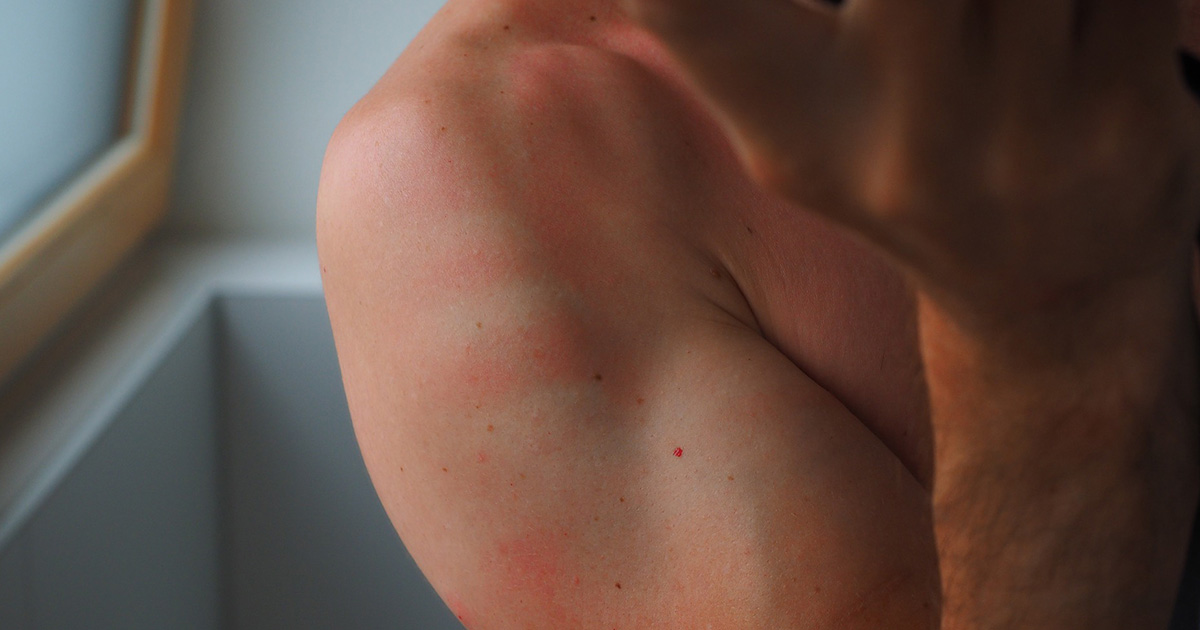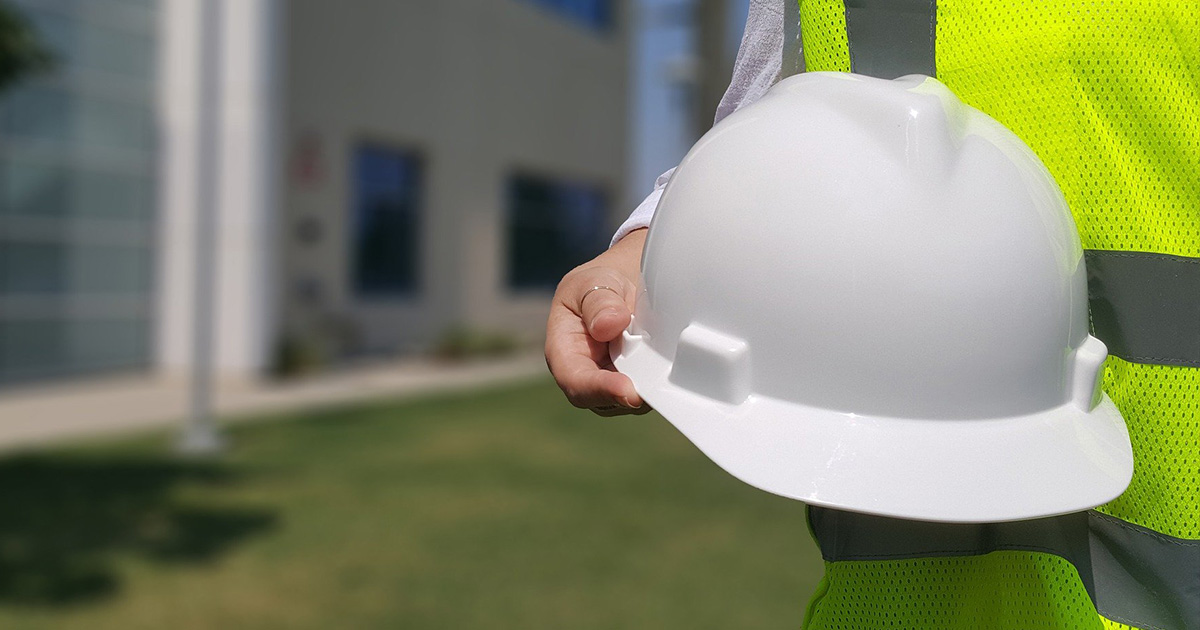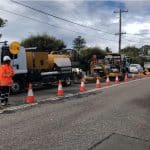With the temperatures on the rise and the longer days out in the sun, it pays to be summer smart whilst on the job. And, working in Traffic Control and Construction industries means being out under the beautiful Aussie skies where UV rays from the sun are getting harsher. So, it pays to be summer smart when it comes to some common summer conditions such as sunburn, heat cramps, heat exhaustion, and heat/sun stroke.
In particular, knowing the signs and what to do when these conditions happen is important. In fact, it may mean the difference between finishing the day and turning up for your next shift versus being taken to hospital and missing your next few shifts whilst you’re at home (or in the hospital) recovering. So, in this blog post, we’re sharing our Summer safety tips for traffic controllers.
How To Prevent And Treat Sunburn
To begin with, did you know that on an average summer weekend in Australia, 1 in 8 adults and 1 in 5 teenagers suffer from sunburn (Cancer Council Australia)? Scary thought, right?
And, did you know that in the height of summer, days where the UV is at ‘very high’ (10+) rating, it only takes 10-15 minutes to be sunburnt (Cancer Council Australia)?
In addition, what’s even scarier, 18% of adults don’t protect their skin from the sun when spending more than 1 hour outdoors during summer. So, is this you?

What is sunburn?
According to Cancer Council Australia, sunburn is an inflammatory reaction to ultraviolet (UV) radiation damage to the skin’s outermost layers. In addition, it is important to remember that sunburn can happen on some of the most overcast days or on cooler days in summertime.
What are the signs of sunburn?
Common signs include: – Red or purple skin – Swollen skin – Warm or hot skin – Pain or itching in the area – Blistering of the skin – Nausea and vomiting – Headache or fever
What to do if you or your colleagues are suffering from sunburn?
According to St John Ambulance Australia, general First Aid for sunburn includes: 1. Rest in a cool and shady place 2. Place in a cool shower, in a cool bath or sponge with cool water for 10 minutes. Repeat if it helps decrease discomfort 3. Apply cool gauze padding to the burnt area 4. Give cold water – keep the fluids up, you or your colleague may become dehydrated. It’s important to re-hydrate by drinking extra liquids, including water and sports drinks that help to replenish electrolytes, immediately and while your skin heals. 5. Speak to a pharmacist about products that help soothe sunburn 6. Seek medical assistance for infants and casualties with blisters
Note: do not pop blisters.
Sunburn to the eyes: – First, cover eyes with thick, cool, moist dressings to cool them and keep light out – Second, reassure the casualty – Third, seek medical assistance
Prevention is key – be sun smart
When you are in the sun, the best way to prevent sunburn is to ‘slip, slop, slap, seek and slide’ and follow the sun smart rules at your workplace: – Slip on some sun-protective clothing that covers as much skin as possible. – Slop on broad-spectrum, water-resistant SPF30+ sunscreen. – Slap on a hat which is broad-brimmed or legionnaire-style to protect your face, head, neck and ears. – Seek some shade. – Slide on some sunglasses, making sure they meet Australian Standards.
How To Prevent And Treat Heat Cramps and Heat Exhaustion
Heat-related conditions impact workers working in the summertime due to the heat, rising in daily temperatures, and high humidity.
As a result, it is important to know how to keep cool in the Australian summer time especially when you are working as a Traffic Controller and in Construction.
What are the signs of heat cramps?
According to Safe Work Australia and WorkSafe NSW, heat cramps are the mildest form of heat injuries. And, they involve intermittent, involuntary spasms of larger muscles that occur when an individual who is physically active in hot and/or humid weather.
Heat cramps, heat exhaustion and heatstroke are collectively known as ‘heat-related illness’. And, though heat cramps are the least serious of the three, they still may be very painful and alarming. In addition, they can occur hours after you finish work.
What should you do if you or your colleagues suffer from heat cramps?
– First, stop all activity and find a cool place to rest – Second, muscle cramps and spasms can be overcome by gently stretching the cramped muscle – Third, replace fluid loss by drinking water, sports drinks, or other electrolyte replacement solutions
Finally, if the cramps cannot be controlled, the affected individual should seek medical care.
Also, there is no specific condition that separates heat cramps from heat exhaustion. In fact, the signs of heat cramps and heat exhaustion can overlap, and severe heat cramps may be heat exhaustion.
In other words, heat exhaustion occurs when somebody becomes dehydrated due to a lack of fluid or fluid loss from being or working in a hot and humid environment. And, if you ignore the signs of heat exhaustion, it develops into heatstroke.
So, don’t ignore any signs of any health conditions including heat-related conditions. And, be summer smart.
What are the signs of heat exhaustion?
According to WorkSafe Australia, the signs of heat exhaustion may develop suddenly or over time. And, common signs of heat exhaustion can include:
- Dehydration, thirst, and reduced or dark urine output
- Sweating
- Elevated body temperature
- Weakness or fatigue
- Headaches and dizziness
- Nausea
- Muscle cramps In addition, severe symptoms include:
- Stop sweating
- Cold, pale, or clammy skin
- Clumsiness or slower reaction times
- Disorientation or impaired judgement
- Rapid or short breathing
- Rapid weak pulse or heart palpitations
- Tingling or numbness in fingers or toes
- Visual disturbance
- Vomiting or an unwillingness to drink
What to do when you or your colleague is suffering from heat exhaustion?

Again, prevention is key: Be sun smart
What can you do to prevent heat cramps and heat exhaustion?
First, be aware of the weather and your workplace location. And, be in the know about workplace plans to manage heat related conditions.
What Safe Work Australia, Safe Work NSW and Red Cross Australia, advise to do when the temperatures start to rise:
Be Summer Smart To Get Through The Hot Summer Days
So, knowing and pre-planning can help you and your colleagues to get through the hot summer days. Remember, the health and safety of you and your colleagues is so important. And, you cannot do your job if you are not well. So, be summer smart so everyone can return to work the next day.

How To Avoid And Treat Heatstroke/Sunstroke
In short, heatstroke and sunstroke are the same condition. Heatstroke is a medical emergency. It is a life-threatening condition in which the body overheats and can not maintain a healthy temperature between about 37oc to above 40.5oc.
Heatstroke is caused by lengthy exposure to heat. You can get heatstroke inside or outside, including by exercising or working in the heat.
What are the signs of heatstroke?
Common signs of heatstroke include:
What should you do if you or a colleague is suffering from heatstroke?
According to St John Ambulance Australia, general First Aid for sunburn includes:
If the person is unconscious (unresponsive or not alert), place them in the recovery position – on their side with their mouth down (to drain any fluids) and the chin up to prevent possible suffocation.
Do not give aspirin or paracetamol to someone with heat stroke since this may make things worse.

Prevention Is Best
Heatstroke is linked to dehydration, so in hot conditions:
To conclude, know your body and the weather. And, have a plan in place or discuss a plan with your colleagues and supervisor. In short, prevention is better than the condition. So, be summer smart and look after your and your colleagues’ health so everyone can return to work the next day.
Want to learn more about how to be summer smart? Then, read traffic controllers and sun safety.







